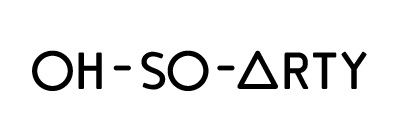One of the stories told in the classic text History of Rome, by Livy, is that of a noblewoman Lucretius who has been raped by the son of a tyrant. She then conscribes her family to avenge her and proceeds to take her own life. This story inspired a painting titled “The Death of Lucretia” from the mid-15th century, attributed to the Italian painter Giovanni di Paolo.
Oren Eliav, Lucretia, Oil on canvas
The center of this painting depicts a bedroom where, with her right hand grasping the handle of a knife plunged into her heart, a woman bleeds from her chest. Four other figures witness this event, with one reaching out and running towards her with open arms and a gaping mouth.
Beyond this middle scene, the painting presents luxurious living quarters; the multi-colored floor tiles form repeating geometric patterns, connecting various rooms and towers with arched openings, and a surrounding, crenelated wall beyond which there is only black. Besides these clear figures and the historical reference, this painting depicts a deceptive perspective. The painting effects the illusion of three-dimensions, but there isn’t a clear vanishing point. Instead, the vanishing point seems to shift as a viewer’s gaze scans, suggesting the surreal conclusion that there are multiple vanishing points. This slightly disorienting use of perspective intimates a teetering between a mastery of realistic representation and a leap into the imagination.
Oren Eliav, Late, Oil on canvas
This painting, attributed to di Paolo, was on permanent display in the Israel Museum’s European Art gallery. There, Israeli artist, Oren Eliav, discovered it. In the book, “How to Disappear Completely”, which shares the name of the exhibition it accompanies, curator, Aya Miron, tells the story of Eliav’s unfolding relationship with “The Death of Lucretia”. According to Miron, after first catching his eye, the painting drew in Eliav for frequent visits. The artist then began to take photographs of the painting, which he manipulated digitally -- cutting out sections, changing the sizes, and playing with various aspects. These manipulated photographs became the preparatory material that inspired the paintings in “How to Disappear Completely”, an exhibition of Eliav’s work currently on display in the Israel Museum.
Most of Eilav’s work depicts fragments of the original “Death of Lucretia”. Small sections of the original picture are enlarged such that they elicit a sense of immensity. While the “Death of Lucretius” is about 30cm by 40cm, Eilav’s work in “How to Disappear Completely” ranges from about twice to over ten times the size of the original. These enlarged fragments display manipulated colors, grains, and textures. It’s as if Eliav’s careful attention transformed the original -- grafting digital manipulations and his own imagination to the oversized re-depictions of the first scene.
Oren Eliav, Giovanni, Oil on canvas
A few of Eliav’s paintings taking much bigger leaps in their alterations of the original scene. For instance, in a few paintings, the knife that the figure of Lucretia bears is not present, and the position of her hands has changed. Reading across some of these more heavily manipulated images, it’s as if Eliav presents a few frames from a comic strip -- showing Lucretia’s dead body disappearing into the afterlife. Beyond their reproduction, perhaps Eliav reflects the multiple vanishing points in the original picture by adding these multiple vanishing figures.
Oren Eliav, Corner, Oil on canvas
Given how Lucretius’ history of Rome goes on to describe how the act of vengeance prompted by Lucretia’s rape and death caused the ushering in of the Roman Republic, realizing the potential for multiple vanishing points could reflect this shift in power -- representing a move away from central rule towards competing sources. The same shifting perspective is present in Eliav’s work, but with his fragmenting, manipulations, and lively colors, perhaps he nods towards a different political commentary.
Take an Oh So Arty tour in Jerusalem to visit the Israel Museum and more.





